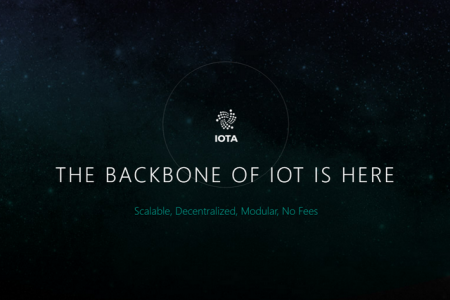The team behind IOTA is going to introduce the first decentralized blockless tokens for the Internet of Things that will allow users make transactions at zero fees.
With the introduction of virtual money, the disadvantages of centralized payment systems became more evident. The risk of hacking attacks, fraudulent activities, costly maintenance or sudden service interruptions are among the drawbacks of these systems.
After the launch of blockchain back in 2009, people quickly realized the benefits of using decentralized settlement systems. The process should no longer involve expensive intermediaries to complete transactions. The blockchain continues to attract billions of dollars from investors willing to develop the concept of the distributed ledger.
However, a number of issues, including scalability limits, prevent blockchain from wider adoption in various sectors such as the Internet of Things, which connects millions of devices.
Another major drawback of the existing digital currencies is that they make micro payments impossible. Current systems charge a fee for each transaction, but sending small amount of money also involves paying a fee which can be much higher.
The bitcoin network is currently limited to roughly 7 transactions per second, while the credit card giant Visa processes 2000 transactions per second. So, the lack of capability and low processing capacity makes the global roll out of blockchain impossible.
Over the last two years, IOTA developers have been working on a totally new distributed ledger architecture that would solve inherent blockchain issues like its scalability limits. With the new platform, developers provided a new scalable and secure settlement solution with absolutely zero fees.
IOTA, the first decentralized IoT tokens, is about to be released in beta version. The platform uses an open source permissionless distributed ledger architecture called Tangle.
According to Tangle white paper, the project, which was first introduced in 2015, is targeted at the IoT and machine-to-machine payments. The platform is set to become the standard layer for data integrity and real time transaction settlement.
To issue a transaction on the ledger, users must approve other transactions, therefore contributing to the network’s security. As a transaction gets more approvals, it becomes more accepted by the system and it will be almost impossible for the system to accept double-spending transaction. The network is not divided into users and validators, instead, they are the same.
Unlike blockchain, IOTA has no blocks, what means there is no limits on how the network can scale. Besides, the system is immutable, so there is no risk that anybody would fork it.
The developers behind IOTA have also partnered with Canonical to leverage the company’s position and expertise in the market. They are currently working on micro billing solutions for the telecommunications market using IOTA technology.
A live demo of IOTA’s micro billing solution will be presented at the Mobile World Congress that will take place between February 27 and March 2 in Barcelona.
next